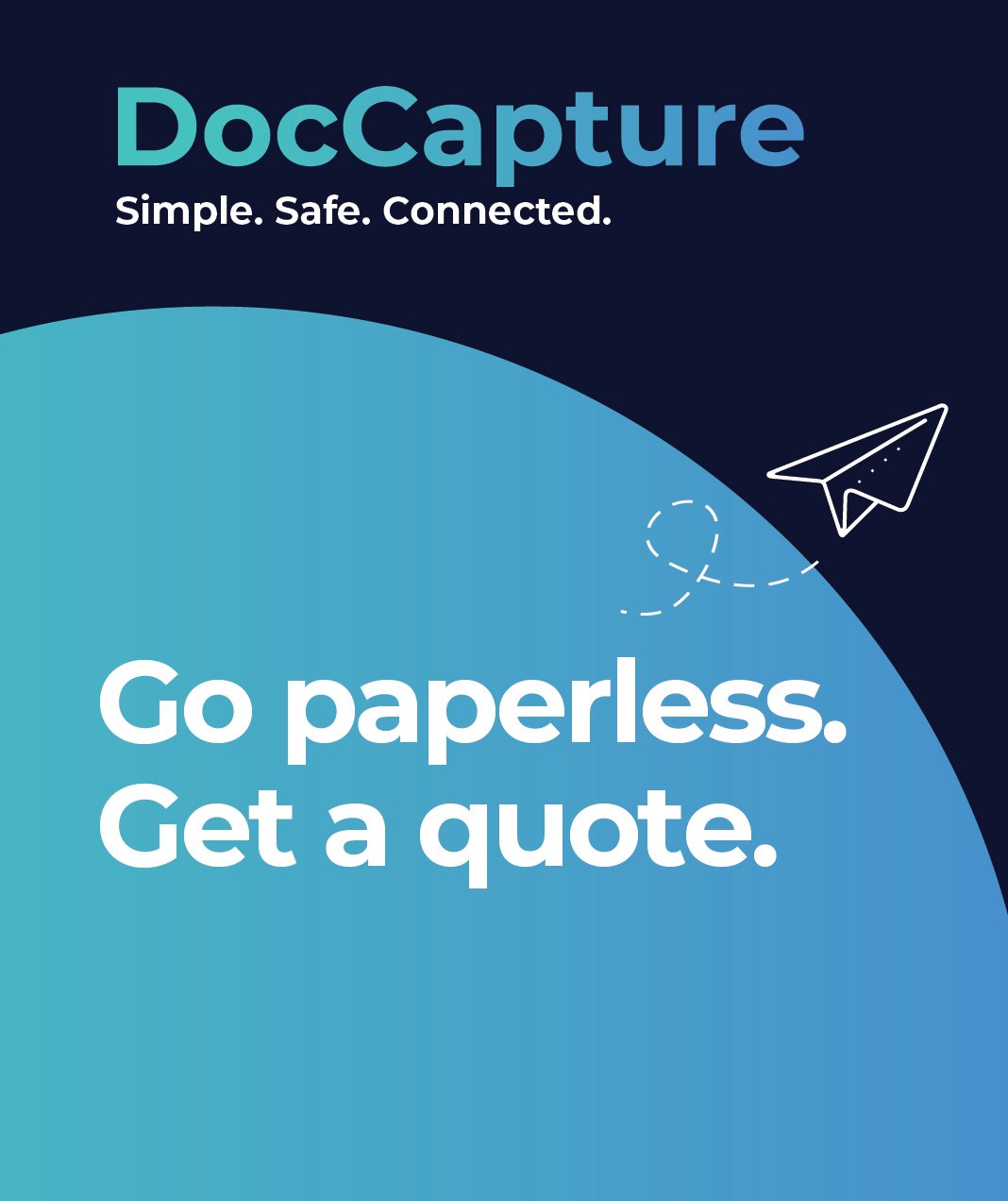Reducing Administrative Burden in School Boards with Document Scanning
Table of contents
Administrative duties in school boards have grown increasingly complex in recent years. With expanding student populations, heightened compliance requirements, and rising expectations for transparency, leaders such as CIOs, Directors of IT, and Records Management Officers are under constant pressure to do more with less. Reducing administrative burden in school boards has become not just a goal—but a necessity.
Traditional, paper-based systems strain already limited resources, making day-to-day operations inefficient and prone to error. Whether it’s managing thousands of student records, handling compliance documentation, or coordinating interdepartmental workflows, the manual workload is overwhelming.
Fortunately, digital document management offers a strategic solution. By leveraging document scanning and imaging technologies, school boards can streamline operations, bolster compliance, and significantly reduce costs. This article explores how adopting these tools can turn cumbersome processes into seamless, efficient systems that allow education professionals to focus on what matters most: student success.
The Growing Administrative Burden on School Boards and Its Root Causes
Across North America, school boards are grappling with a surge in administrative responsibilities. From compliance with evolving state and federal regulations to managing vast amounts of student information, these tasks have become increasingly complex and time-consuming. This growth in administrative workload is not merely a perception—it’s a reality felt daily by school board decision-makers.
Several root causes contribute to this burden:
-
Regulatory pressure: Schools must maintain meticulous records to meet FERPA, IDEA, and state-level mandates.
-
Increased enrollment: A growing student body means more records, forms, and reports to manage.
-
Legacy systems: Many school boards still rely on outdated, paper-based processes that slow down workflows and increase error rates.
These challenges aren’t going away. In fact, as highlighted in Digital Transformation for School Boards, failing to modernize administrative systems risks compounding inefficiencies and compliance vulnerabilities.
In this landscape, the need for a more scalable, efficient approach to document management is clear.
Challenges Related to Managing Large Volumes of Records Manually
Manual document management remains a persistent bottleneck for school boards. Every student record, enrollment form, IEP, disciplinary note, and health record contributes to a growing archive that must be securely stored, easily retrievable, and audit-ready. When managed on paper, this volume creates serious logistical and operational problems.
Key challenges include:
-
Storage limitations: Physical storage consumes valuable real estate in schools and district offices.
-
Time inefficiencies: Staff spend hours retrieving, copying, and re-filing records.
-
Risk of loss or damage: Paper documents are vulnerable to fire, water damage, and human error.
-
Compliance difficulties: Ensuring FERPA compliance is more difficult when documents are scattered across filing cabinets.
As explored in Student Records Scanning, digitizing student documents mitigates these risks. Furthermore, insights from Scanning Student Records demonstrate how converting physical archives to searchable digital files can vastly improve administrative efficiency and record integrity.
These manual challenges not only drain time and resources—they expose school boards to avoidable compliance and security risks.
The Role of Digital Document Management in Reducing Paperwork and Processing Time
Digital document management transforms how school boards handle administrative tasks. By scanning and indexing documents, schools eliminate the need for paper-based filing systems and enable fast, secure access to records. This shift significantly cuts down on paperwork and administrative delays.
Here’s how it works:
-
Digitization of legacy files: Physical documents are scanned and converted into searchable digital files.
-
Centralized access: Authorized personnel can retrieve records instantly from a secure database.
-
Automated workflows: Tasks like approvals, notifications, and records retention can be streamlined using digital tools.
According to Document Scanning for Schools, this process not only increases efficiency but also supports remote access and disaster recovery—both crucial for modern school operations.
As detailed in From Enrollment to Graduation: The Digital Journey of Student Records, digital systems also improve continuity across student lifecycles, from kindergarten enrollment to graduation documentation.
In short, digital document management is not just a convenience—it’s a strategic upgrade that directly reduces the administrative burden in school boards.
Key Benefits: Operational Efficiency, Improved Compliance, Enhanced Data Security, and Cost Reduction
For school boards seeking to operate smarter and leaner, digital document management offers a high-impact solution. The advantages extend well beyond basic convenience—these systems deliver measurable improvements in key operational areas.
Operational Efficiency
Digitized records eliminate redundant manual tasks and significantly reduce retrieval time. Staff can spend less time on paperwork and more time on strategic initiatives. Systems can be tailored to fit district-wide workflows, as demonstrated in Impact of Document Scanning on School Boards.
Improved Compliance
Strict adherence to FERPA, HIPAA, and other regulations becomes easier when records are properly categorized, encrypted, and auditable. With built-in retention policies and access controls, compliance no longer relies on manual oversight.
Enhanced Data Security
Digital files are protected with role-based access, audit trails, and encrypted storage—far superior to file cabinets or shared drives. This reassures risk-averse stakeholders concerned about data breaches or accidental exposure.
Cost Reduction
Going digital cuts expenses tied to paper, printing, mailing, and storage. Long-term ROI is enhanced by fewer hours spent on repetitive tasks and fewer errors due to misplaced or misfiled documents. This is particularly evident in use cases outlined in How School Boards Can Benefit from Document Imaging.
Each of these benefits directly supports school boards in their mission to serve students effectively while managing resources responsibly.
Addressing Common Objections: Integration, Cost, Security, and Change Management
Adopting new technology often raises legitimate concerns—especially in institutions as risk-sensitive as school boards. Fortunately, modern document scanning and management solutions are designed to address these worries head-on.
Objection 1: “It won’t integrate with our existing systems.”
Reality: Leading document management platforms are built with interoperability in mind. They can integrate with student information systems (SIS), HR platforms, and compliance tools. Seamless migration ensures minimal disruption, allowing IT departments to maintain continuity during implementation.
Objection 2: “The cost is too high.”
Reality: While there is an upfront investment, the long-term savings are substantial. As outlined in Going Paperless: The Future of School Board Document Management, reduced paper use, staff hours, and storage costs lead to clear ROI. Many districts recoup their investment within the first year.
Objection 3: “What about data privacy and security?”
Reality: Security is a cornerstone of digital document management. Files are encrypted, access is role-restricted, and audit trails provide transparency. Solutions align with FERPA and HIPAA standards, giving stakeholders peace of mind.
Objection 4: “Our staff won’t adapt to the change.”
Reality: Resistance is natural, but with proper training and phased implementation, staff typically welcome the efficiency gains. According to Best Practices for Scanning Student Records, involving staff early in the process improves adoption and minimizes friction.
Proactively addressing these objections can make the transition smoother and help secure buy-in from all levels of school board leadership.
Realistic Implementation Tips and How to Get Started
Transitioning from paper to digital document management doesn’t have to be overwhelming. With a strategic, phased approach, school boards can make the shift smoothly—without disrupting daily operations.
Start with High-Impact Areas
Identify departments where document volume is highest or compliance pressure is greatest. Often, student records are a prime candidate. Refer to The Need for K–12 Schools to Scan Student Records for guidance on prioritization.
Choose the Right Partner
Work with a provider experienced in education-specific needs. How to Choose a Student Records Scanning Partner outlines key evaluation criteria like FERPA compliance, secure chain-of-custody, and scalability.
Plan for Staff Training and Support
Ensure employees are trained not just on how to use the system, but also on how it improves their workflows. A change champion within each department can help foster a smoother transition.
Establish Clear Policies
Create policies for document retention, access control, and data privacy. This promotes compliance and standardization across the district.
Begin with a Pilot Program
Test the solution with a single school or department. Use feedback to fine-tune the rollout plan before scaling district-wide.
By starting small and scaling strategically, school boards can reduce risk while reaping the rewards of digitization.
Conclusion
School boards are under increasing pressure to deliver more with fewer resources. Paper-based systems, while once standard, are now liabilities—consuming time, space, and energy that could be better spent on student outcomes. Digital document management offers a proven path to reducing administrative burden in school boards, with clear benefits in efficiency, compliance, data security, and cost savings.
With extensive experience in the education sector, DocCapture understands the unique challenges school boards face. Whether you're looking to digitize decades of student records or modernize daily workflows, DocCapture offers secure, scalable, and FERPA-compliant solutions tailored to your needs.
Visit Document Scanning for Schools to learn how your district can get started. Or take the first step today—fill out our "Get a Quote" form to explore a custom solution designed for your school board.
Share this
You May Also Like
These Related Stories

Optimizing School Admin Workflows with Automated Document Scanning

Digital Transformation in Education: The Role of Document Scanning

